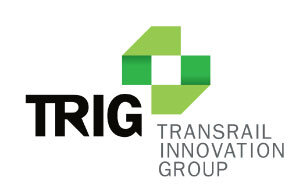TRIG Tips - Operational Health and Safety Tips for Transloading Terminals
In May, TRIG held workshops with transloading terminal operators to discuss the operational health and safety issues related to maintaining operations during the pandemic.
Here are the five top insights and considerations that came from these workshops:
Shift Isolation
One of the most significant risks that all terminal operators face in this new world is the possibility of a single COVID case affecting a full transloading crew.
To avoid such an incident, measures need to be taken to keep teams isolated. Some of the practices include:
Transitions between shifts – what used to be a valuable process for the hand-off between crews is now a potential liability. Using physical distancing, video technology, and increased documentation helps with the necessary sharing and transfer of information.
Keeping external workers separate from your team – One strategy to ensure that outside workers, such as truck crews, are isolated from the terminal operators, is to rent portable toilets for visitors. This reduces contact with areas permanent terminal crews use.
Isolation between terminal staff – similar to many multi-site operations, you can reduce the risk of cross contamination of crews by allocating resources to one site only. If there is an incident, you can then transfer a full terminal crew from one location to back-up another, while the original crew is in self-isolation.
Emergency Response & Safety - Ensure that Emergency Response procedures conform to appropriate social distancing practices, such as using outdoor areas as muster points. Also, leverage technologies such as video-conferencing for Safety Meetings.
Keep job functions separate - Maintaining segregation between various on-site functions such as Maintenance staff, Lab staff and Office staff will help reduce spread by contact.
Some initial estimates from terminal operators suggest that the productivity / cost impact of new procedures could be as high as a 10 to 15% increase.
Individual assignment of tools, workspace vehicles and Personal Equipment Assignment (PPE)
Typical operators will have common touch points for workers such as desks, computer screens, tablets, vehicles, and PPE gear. New procedures should be instituted to assign individual work areas, tools, and gear to team members. End of the shift procedures should also include a full sanitization of all work tools and areas for the next shift.
Rigorous Two-Way Employee Communications
Uncertainty abounds in our new normal as information comes available rapidly that may change priorities for keeping people safe. Organizations need to ensure new policies and procedures are over communicated, with clarity, to eliminate ambiguity.
Another important strategy is to foster strong two-way communication with team members. All change brings both risk and opportunity. Getting regular feedback from employees and contractors is critical to responding quickly and appropriately to new situations.
Measurement of Health and Well-Being, and Respecting Confidentiality
Compliance with new guidelines and policies is critical to keeping terminals operating. New practices and tests continue to be rolled out in different ways in different jurisdictions adding complexity to operations with multiple locations.
Ensuring compliance to specific monitoring and screening practices is very important for government, customers, and suppliers. Clear and simple procedures that are easy to implement can help you achieve traceability, and allow for continuity.
However, recording individual health data, such as body temperature, can trigger unintended violations of confidentiality. The solution rests in ensuring the appropriate standard tests are being used, but only recording simple pass or fail results.
Streamline Process and Reduce Labor though Technology
It has been said “never waste a good crisis”. While this is said tongue in check, opportunities abound across the world to leverage technology.
Technology can be used not only to cope with new realities, but to improve productivity as well. Over the last 3 months, we’ve learned how many jobs can actually be done remotely which we thought impossible.
Technology offers Terminals similar opportunities to not only streamline operational processes and reduce on-site labor, but to improve safety for individuals as well. One example is to move to a closed loop transloading process with remote monitoring. This type of process reduces labor, increases safety, and increases throughput.





